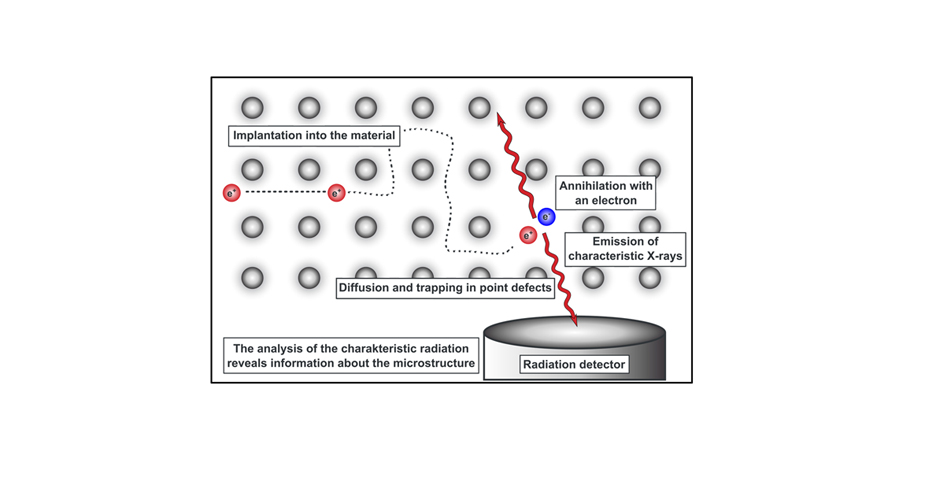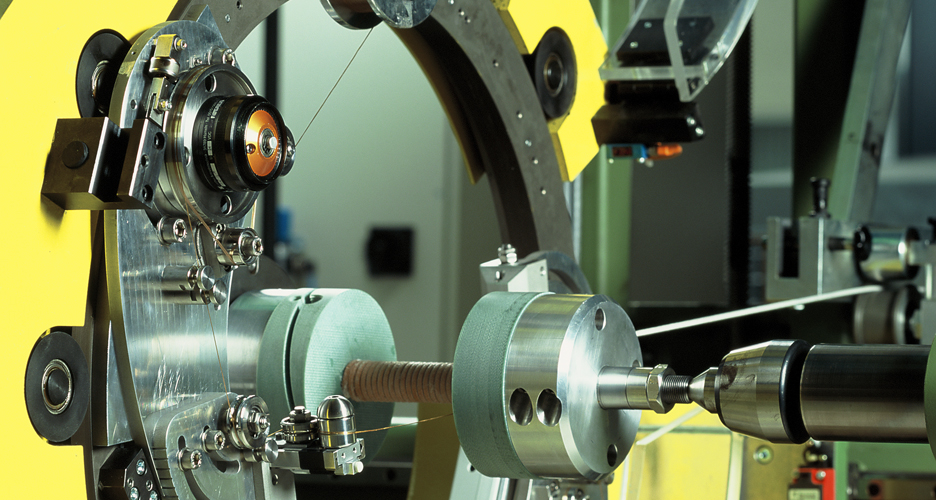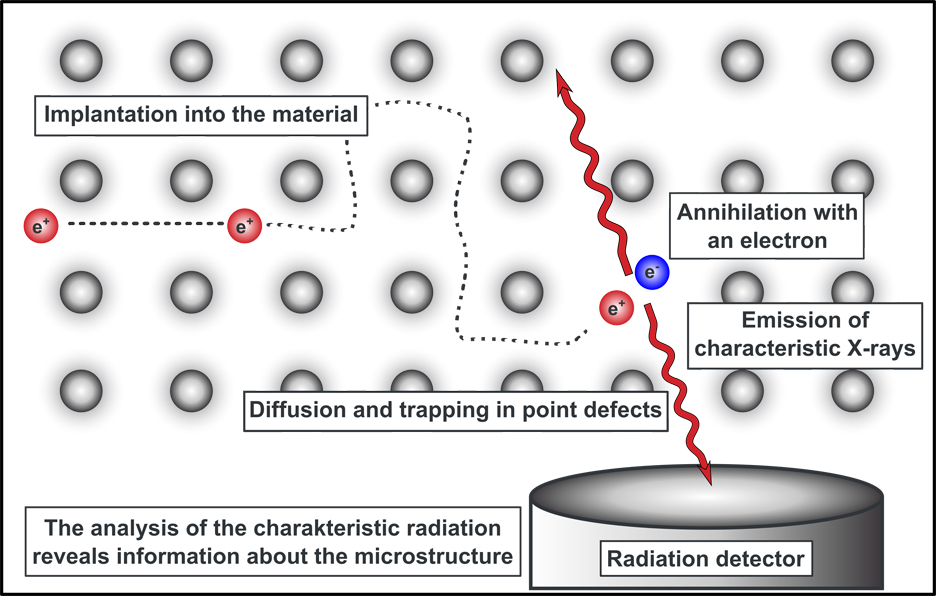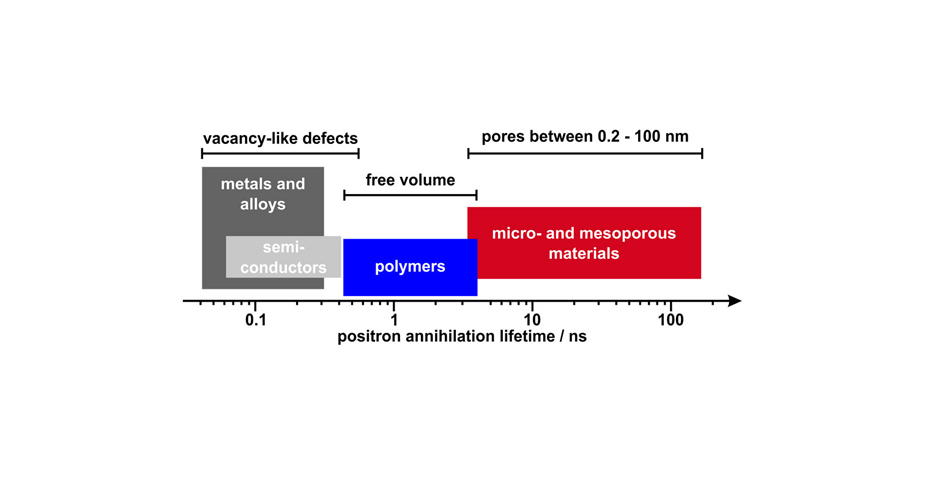COMPAS – Combined Methods for Positron Annihilation Spectroscopy
Positron annihilation lifetime spectroscopy makes it possible to examine almost any material for atomic defects such as vacancy clusters, free volumes or pore systems without destruction and without complex sample preparation. Based on the measurements, statements can be made about the size and the relative proportion of any defect structures. This can be used in the characterization and prediction of fatigue or in the structural analysis of metals, polymers and inorganic materials. In particular, closed and open pore systems in the range smaller than 20 nm can be reliably examined with the method. Positron annihilation lifetime spectroscopy stands out from other standard methods due to its very high sensitivity and provides detailed information about the microstructure. The information content is not locally limited, but is characteristic of an extensive sample volume.







